Deborah J. Ross's Blog, page 84
May 14, 2018
Crossroads of Darkover Author Interview: Robin Wayne Bailey
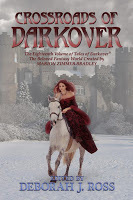 Just out, an all-new Darkover anthology featuring tales of decisions, turning points, love lost and found, all in the beloved world of the Bloody Sun. Stories by Jenna Rhodes, Pat MacEwen, Gabrielle Harbowy, Evey Brett, Rosemary and India Edghill, Diana L. Paxson, and more!
Just out, an all-new Darkover anthology featuring tales of decisions, turning points, love lost and found, all in the beloved world of the Bloody Sun. Stories by Jenna Rhodes, Pat MacEwen, Gabrielle Harbowy, Evey Brett, Rosemary and India Edghill, Diana L. Paxson, and more!Order yours today at: iBook, Kindle, Kobo, Nook.
Table of Contents is here.
Deborah J. Ross: Tell us about your introduction to Darkover. Robin Wayne Bailey: The first Darkover tale I ever read was Darkover Landfall, and I came across it perhaps in an unusual way. At the time, I was working in a bookstore part-time to earn college money, but I was also already a fairly dedicated book collector. Among the books I collected were DAW's yellow-spined paperbacks, which DAW was kind enough to number. I searched these out in new bookstores and used bookstores, determined to own them all, and this is how I came across Darkover Landfall. I'm not sure if I had previously read any of Marion Zimmer Bradley's earlier work, but this book captivated me. I was a sucker for a good "lost colony" story, and this proved one of the best. I remember the day we unpacked that latest DAW shipment and removing this book with its shiny cover and artwork by, I think, Jack Gaughan. It excited me then, and although I drifted away from the series after a time, it continues to excite me.
DJR: What about the world drew you in?RWB: Several things about Darkover struck me as fairly unique, even daring, at the time the books were appearing. The blending of disparate cultures immediately stood out. The first ship that crash landed on Darkover carried an interesting mix of Celtic and Spanish colonists, and maybe a few others I'm forgetting. In so many sf novels, then and now, humans seem to be a homogeneous group without national or cultural identity. Not so, Darkover. Marion emphasized and celebrated these differences. The other thing that surprised me was her willingness to play with sexuality and gender roles. Lots of early sixties and seventies science fiction played with sex, but always of a rather tame heterosexual variety. Marion went further. Her depictions of the Renunciates and the society established by the Free Amazons was remarkable for its time, as was way in which polygamy was regarded throughout the series. Her views on homosexuality and her willingness to write gay characters into the series was also almost revolutionary, although her depictions of gay men and relationships troubled me then and continue to trouble me. But that's for another essay, perhaps.
DJR: What inspired your story in Crossroads of Darkover? RWB: Ah, an easy one to answer. I've tried to make each of the stories I've written for the various recent Darkover anthologies different from each other and different from other stories that appeared alongside mine. With Crossroads of Darkover, I asked myself how I might best do that again, and it occurred to me that there had never been an outright horror story set on Darkover. As it happens, one of my favorite horror stories in "The Willows," by Algernon Blackwood, written in 1907. It's subtle and it's creepy. I didn't want to copy it and transfer it to Darkover, but I wanted to analyze what made that story so powerful and try to bring those techniques into my Darkover story. I loved the result, but Deborah Ross and I both agreed that it didn't quite work in a Darkover setting, given everything we already know about Darkovan history and culture. So she allowed me to rewrite "Snowquake" to make it better fit in. It's still a creepy story and as close to a horror story as I could make it. I hope readers will love it.
DJR: Is there another Darkover story you would particularly like to write?RWB: I'm sure there are any number of other Darkover stories I'd still love to write - even if I don't know precisely what they are yet. Deborah allows me a lot of freedom to explore the themes I want and to be critical of Darkovan society where I think criticism is needed. I appreciate her as an editor very much.
DJR: What have you written recently? What is your favorite of your published works and why? RWB: I still continue to write a lot of short stories, many for the folks at the Marion Zimmer Bradley Trust. I enjoy working with all of them,, and they seem to like my work. So I'm happy. But I'm trying to push myself in new directions, too. I'm doing some script writing on the West Coast these days, and that's been amazing and challenging. I'm back to work on a fantasy novel, also, and enjoying it a lot. A number of recent bad experiences with New York publishing had soured me on writing for a while, but once again I'm starting to find a lot of joy in it.
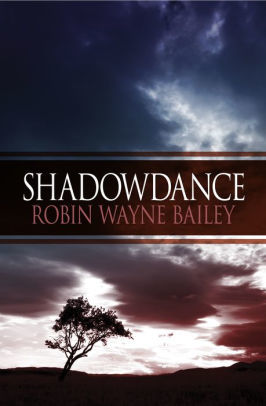 Among my favorite works is Shadowdance, a 1997 novel that was, essentially my coming out novel written at a time when I felt like my whole world was crashing, but instead, through the writing of that book, I found an optimism and freedom like I'd never experienced before. It's available in print, ebook and audible formats now and has endured fairly well. And of course, my Frost novels and stories are ongoing. I love writing those.
Among my favorite works is Shadowdance, a 1997 novel that was, essentially my coming out novel written at a time when I felt like my whole world was crashing, but instead, through the writing of that book, I found an optimism and freedom like I'd never experienced before. It's available in print, ebook and audible formats now and has endured fairly well. And of course, my Frost novels and stories are ongoing. I love writing those.DJR: What lies ahead for you? RWB: What lies ahead? The only answer is "Who knows?" My Fritz Leiber inspired novel, Swords Against the Storm, will soon be reprinted by Centipede Press. I'm eager to see that, as I'm quite proud of it. And more stories, of course. And hopefully, more screen work. And I have a growing desire to write a Western novel or two. But life is change and life is adventure. I'm in the Carribbean one day and Palm Springs the next or hiking in the Rockies. I cannot stop writing, but what I write - what kind of work or what genre - that's a completely open question.
Robin Wayne Bailey is the author of numerous novels, including the Dragonkin trilogy and the Frost series, as well as Shadowdance and the Fritz Leiber-inspired Swords Against the Shadowland. His short stories have appeared in many magazines and anthologies with frequent appearances in Marion Zimmer Bradley's Sword and Sorceress series and Deborah J. Ross's Lace and Blade volumes. Many of his stories have been collected in two volumes, Turn Left to Tomorrow and The Fantastikon: Tales of Wonder, published by Yard Dog Books. He's a former two-term president of the Science Fiction and Fantasy Writers of America and a co-founder of the Science Fiction Hall of Fame. His latest book is Little Green Men--Attack!, an anthology co-edited with Bryan Thomas Schmidt.

Published on May 14, 2018 01:00
May 11, 2018
Short Book Reviews: A Classic Nancy Springer Fantasy
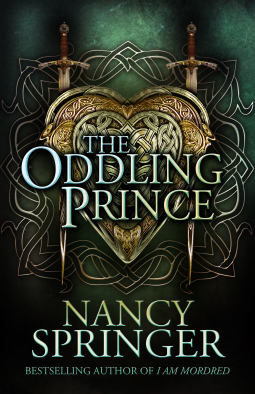 The Oddling Prince, by Nancy Springer (Tachyon Publications) is pure, classic Nancy Springer. In a faroff land, not unlike northern England, a king returns from a mysterious absence, wearing a magical ring that rapidly drains his life force. Just as he is about to perish, a young man appears, riding a steed of untamed light, and lifts the curse. The narrator, the king’s son and heir, befriends this stranger, his half-fae half-brother. But all is not well, as residual evil poisons the king’s mind and danger lurks just beyond the borders. Springer’s style sometimes reminds me of Tanith Lee, yet is completely her own. The love and fidelity of the two brothers, the steadfast discernment of the queen, the twists and turns and unexpected character developments, all kept me enchanted, page after page. Springer is in fine style!
The Oddling Prince, by Nancy Springer (Tachyon Publications) is pure, classic Nancy Springer. In a faroff land, not unlike northern England, a king returns from a mysterious absence, wearing a magical ring that rapidly drains his life force. Just as he is about to perish, a young man appears, riding a steed of untamed light, and lifts the curse. The narrator, the king’s son and heir, befriends this stranger, his half-fae half-brother. But all is not well, as residual evil poisons the king’s mind and danger lurks just beyond the borders. Springer’s style sometimes reminds me of Tanith Lee, yet is completely her own. The love and fidelity of the two brothers, the steadfast discernment of the queen, the twists and turns and unexpected character developments, all kept me enchanted, page after page. Springer is in fine style!
Published on May 11, 2018 01:00
May 7, 2018
Crossroads of Darkover Author Interview: Diana L. Paxson
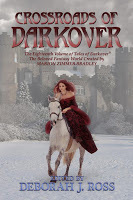 Coming in May, an all-new Darkover anthology featuring tales of decisions, turning points, love lost and found, all in the beloved world of the Bloody Sun. Stories by Jenna Rhodes, Pat MacEwen, Gabrielle Harbowy, Evey Brett, Rosemary and India Edghill, Diana L. Paxson, and more!
Coming in May, an all-new Darkover anthology featuring tales of decisions, turning points, love lost and found, all in the beloved world of the Bloody Sun. Stories by Jenna Rhodes, Pat MacEwen, Gabrielle Harbowy, Evey Brett, Rosemary and India Edghill, Diana L. Paxson, and more!Order yours today at: iBook, Kindle, Kobo, Nook.
Table of Contents is here.
Deborah J. Ross: Tell us about your introduction to Darkover.Diana L. Paxson: I first heard of the Darkover books when I discovered fandom in the mid-60s, became even more involved when Marion Zimmer Bradley admitted they were a series in the 70s and started using Darkover as a setting for some ground-breaking ideas.
DJR: What inspired your story in Crossroads of Darkover? How did you balance writing in someone else’s world and being true to your own creative imagination?DLP: I asked myself what Marion Zimmer Bradley would be writing about if she were here. I am sure she would have tackled trans-gender issues. My perspective might be different, but I am trying to push the envelope a little further as she would have done.
DJR: Is there another Darkover story you would particularly like to write?DLP: I am happy for the opportunity to further develop the characters from my previous stories.
DJR: What have you written recently? What is your favorite of your published works and why?
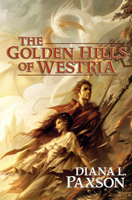 DLP: Most recently, a non-fiction book on the Norse god Odin, and short stories for Lace and Blade and the Valdemar anthology. I am getting a new Westria novel ready for publication.DJR: Hooray!
DLP: Most recently, a non-fiction book on the Norse god Odin, and short stories for Lace and Blade and the Valdemar anthology. I am getting a new Westria novel ready for publication.DJR: Hooray!DJR: What lies ahead for you? DLP: Non-fiction and fiction on Norse Pagan topics and on political magic, more novels if I have time.
DJR: Anything else you’d like our readers to know about you, Darkover, or life in general?DLP: Now that we are living in such “interesting times”, I think writers should seize the opportunity to use fiction to say what cannot be said (or will not be heard) in any other way.
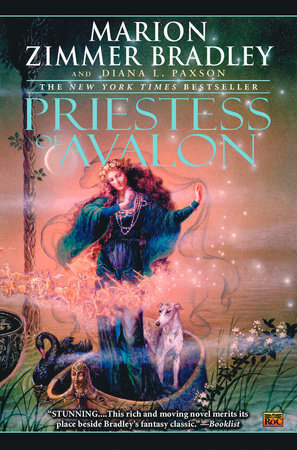 Diana L. Paxson is the author of twenty-nine novels, including the books that continue Marion Zimmer Bradley's Avalon series. She has also written eighty-six short stories, including appearances in most of Marion's Darkover anthologies. She is currently working on a novel about the first century German seeress, Veleda.
Diana L. Paxson is the author of twenty-nine novels, including the books that continue Marion Zimmer Bradley's Avalon series. She has also written eighty-six short stories, including appearances in most of Marion's Darkover anthologies. She is currently working on a novel about the first century German seeress, Veleda.
Published on May 07, 2018 01:00
May 4, 2018
Short Book Reviews: Guy Fawkes with Magic
Fawkes, A Novel by Nadine Brandes (Thomas Nelson)
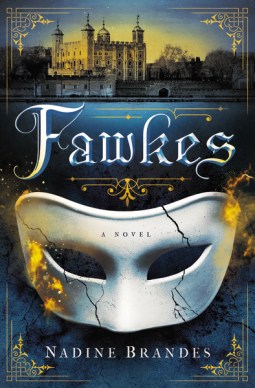
This YA novel centers around two brilliant premises. The first is the setting, England on the eve of the Gunpowder Plot (1605) and the origin of Guy Fawkes Day. The second involves a fascinating new system of magic in which power arises from the various colors, focused by specially constructed masks, constructed by the practitioner’s same-sex parent. A third strength arises from the protagonist narrator, son of the conspirator Guy Fawkes, and his inner turmoil as he is drawn deeper and deeper into a plot to blow up King James I’s Parliament.
Therein, however, lie the book’s weaknesses. Few Americans, unless they are English History buffs, are familiar enough with the Gunpowder Treason Plot to appreciate the cultural, political, and legal aspects. The plot in the book follows the historical order fairly closely but not always in the most logical fashion. Magic is tacked on to historical events; practitioners use their powers only when they don’t change the way things really happened. But any world in which people wield those powers is going to operate very differently than ours, and that requires careful working through all the implications of those powers, of which I see little here.
The attempt to translate the historical Protestant-Catholic struggle into a battle between those who adhere to the color system (“Keepers”) and those devoted to the primal White Light (“Igniters”) is awkward and often confusing. The real struggle was based not only in religious dogma but in politics, arising from the establishment of the Church of England with King Henry VIII and consequent independence from Rome. Queen Elizabeth, Henry’s daughter, did much to establish religious tolerance, although even her emphasis on secular loyalty could not eliminate the plots to restore a Catholic ruler. Without the context of the struggle, the rift between Keepers and Igniters, each hating the other for no apparent reason, come across as superficial. This is all the more so because for most of the story, I had trouble remembering which side was which. Everyone has access to the White Light (which is a snappy, smart-ass voice, quite apart from any references to direct experience of the divine, which also strikes me a reversal of the Catholic-Protestant quarrel). Anachronisms of speech and social attitude added to the confusion.
Besides the system of magic, this story includes a supernatural “Stone Plague” that infects the victim and gradually ossifies both skin and internal organs, resulting in death. Somehow Igniters have concluded that the plague is the fault of the Keepers and the only way to bring it to a halt is to slaughter all of them. Since no one offers any other explanation for how this fascinating disease works, and apparently the magical healers are just as ignorant and incurious, this persecution is arbitrary and baffling.
Despite its significant shortcomings, this novel has many appealing moments. If it sends readers to the history books to find out what really happened, or generates conversations about prejudice and religious persecution, so much the better.
The publisher asked that I include a disclaimer saying I'd received a complimentary review copy through NetGalley and my opinions do not represent theirs.


This YA novel centers around two brilliant premises. The first is the setting, England on the eve of the Gunpowder Plot (1605) and the origin of Guy Fawkes Day. The second involves a fascinating new system of magic in which power arises from the various colors, focused by specially constructed masks, constructed by the practitioner’s same-sex parent. A third strength arises from the protagonist narrator, son of the conspirator Guy Fawkes, and his inner turmoil as he is drawn deeper and deeper into a plot to blow up King James I’s Parliament.
Therein, however, lie the book’s weaknesses. Few Americans, unless they are English History buffs, are familiar enough with the Gunpowder Treason Plot to appreciate the cultural, political, and legal aspects. The plot in the book follows the historical order fairly closely but not always in the most logical fashion. Magic is tacked on to historical events; practitioners use their powers only when they don’t change the way things really happened. But any world in which people wield those powers is going to operate very differently than ours, and that requires careful working through all the implications of those powers, of which I see little here.
The attempt to translate the historical Protestant-Catholic struggle into a battle between those who adhere to the color system (“Keepers”) and those devoted to the primal White Light (“Igniters”) is awkward and often confusing. The real struggle was based not only in religious dogma but in politics, arising from the establishment of the Church of England with King Henry VIII and consequent independence from Rome. Queen Elizabeth, Henry’s daughter, did much to establish religious tolerance, although even her emphasis on secular loyalty could not eliminate the plots to restore a Catholic ruler. Without the context of the struggle, the rift between Keepers and Igniters, each hating the other for no apparent reason, come across as superficial. This is all the more so because for most of the story, I had trouble remembering which side was which. Everyone has access to the White Light (which is a snappy, smart-ass voice, quite apart from any references to direct experience of the divine, which also strikes me a reversal of the Catholic-Protestant quarrel). Anachronisms of speech and social attitude added to the confusion.
Besides the system of magic, this story includes a supernatural “Stone Plague” that infects the victim and gradually ossifies both skin and internal organs, resulting in death. Somehow Igniters have concluded that the plague is the fault of the Keepers and the only way to bring it to a halt is to slaughter all of them. Since no one offers any other explanation for how this fascinating disease works, and apparently the magical healers are just as ignorant and incurious, this persecution is arbitrary and baffling.
Despite its significant shortcomings, this novel has many appealing moments. If it sends readers to the history books to find out what really happened, or generates conversations about prejudice and religious persecution, so much the better.
The publisher asked that I include a disclaimer saying I'd received a complimentary review copy through NetGalley and my opinions do not represent theirs.

Published on May 04, 2018 01:00
April 30, 2018
Crossroads of Darkover Author Interview: Evey Brett
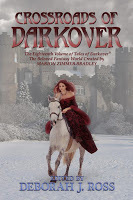 Coming in May, an all-new Darkover anthology featuring tales of decisions, turning points, love lost and found, all in the beloved world of the Bloody Sun. Stories by Jenna Rhodes, Pat MacEwen, Gabrielle Harbowy, Evey Brett, Rosemary and India Edghill, Diana L. Paxson, and more! Order yours today at: iBook, Kindle, Kobo, Nook. Table of Contents is here.
Coming in May, an all-new Darkover anthology featuring tales of decisions, turning points, love lost and found, all in the beloved world of the Bloody Sun. Stories by Jenna Rhodes, Pat MacEwen, Gabrielle Harbowy, Evey Brett, Rosemary and India Edghill, Diana L. Paxson, and more! Order yours today at: iBook, Kindle, Kobo, Nook. Table of Contents is here.Deborah J. Ross: Tell us about your introduction to Darkover.
Evey Brett: Back in 2002 when I was just out of college, I got a job working retail at a now-extinct Foley's department store in a mall. There was a Waldenbooks right across from the store, so I'd often go get a book and settle down in a comfy chair somewhere in the mall to eat my lunch and read. One day I was looking for a new book and picked up The Fall of Neskaya, and I was hooked. Fortunately for me (and the bookstore) they had several other Darkover novels as well.
DJR: What about the world drew you in?
EB: I'm a sucker for stories with telepaths and damaged characters. I'd gone through a number of Mercedes Lackey's books, so finding Darkover gave me a whole new world with a sizeable canon to explore. Having just read the back of The Fall of Neskaya, I'd still pick it up to read because it's got everything I want--telepaths, power, gifts, a tormented character with a secret he can't reveal.
DJR: What inspired your story in Crossroads of Darkover? How did you balance writing in someone else’s world and being true to your own creative imagination?
EB: Since I came awfully close to the deadline with my last Darkover story, I kept trying to think of a plot early on. I had a vague idea of someone with a number of gifts but in nearly useless amounts, but when I started writing there wasn’t really room for more than one gift. I did keep thinking of Allart Hastur from Stormqueen!, and how the multiple futures he saw kept getting in his way, so I went with a variation on that gift and figured out a plot from there.
I did ask Deborah what she thought of a couple ideas when I was partway through, and she gave me a couple ideas which helped tremendously, so I was able to finish this story with time to spare. It was also the only complete story I managed to finish in 2017, so I’m glad it was for a world I care so much about.
For me, it's actually easier for me to write stories within the limits of a particular world or theme, and I've been doing far better at selling stories for anthologies than I have at selling stand-alones. Limits, like historical or world-building details, actually seem to force a better story. I like puzzles and problem-solving, so figuring out how to make my own ideas work within certain limits is fun.
DJR: Is there another Darkover story you would particularly like to write?
EB: I still want to do something with chieri or someone who doesn’t fit the gender binary norm. There are a lot of options, I just have to figure out a plot to go with it.
DJR: What have you written recently? What is your favorite of your published works and why?
EB: Nothing else recent, I’m afraid. One of my favorite stories was published in The Myriad Carnival from Lethe Press, called “El Amor Brujo (Love, the Magician.)” It’s based on a symphonic piece of the same name by Manuel de Falla, and follows the same idea of a gypsy maiden haunted by the ghost of her dead lover, only my main characters are a male trick rider, a rather unusual Lipizzan stallion, and a young man with secrets of his own.
DJR: What lies ahead for you?
EB: I’m not entirely sure at the moment. My first and most helpful e-book publisher closed its doors at the end of 2017, so I’ve gotten the rights back to four novels and a few novellas that are now homeless, and I need to figure out what to do with them. I have a couple anthology stories coming out this year. Past that, I don’t know; I’ll have to see where the muse takes me.
DJR: Anything else you’d like our readers to know about you, Darkover, or life in general?
EB: I owe a great deal to Darkover; because of this world, I talked to Deborah during one WesterCon and we became friends. She published my first story in an anthology called Lace and Blade 2; I published one of her stories in a supernatural horse anthology of mine. So it means a lot to me to be able to add my little bit to a world that changed my life for the better.

After being ordered (or perhaps coerced) to move to southern Arizona by her Lipizzan mare, Carrma, Evey Brett developed a fondness for the local creepy-crawlies such as snakes, scorpions, tarantulas and Gila monsters, not to mention the coyotes, buzzards and hawks that frequent the area. Some of those critters (and/or Carrma) have influenced a number of Evey’s stories, including one in Masques of Darkover and several in Lethe Press anthologies. When not feeding carrots to her equine mistress, Evey can be found shuffling papers for the city or reading submission stories for The Magazine of Fantasy and Science Fiction.

Published on April 30, 2018 01:00
April 27, 2018
Short Book Reviews: A Magical Bookstore Tale from Connie Willis
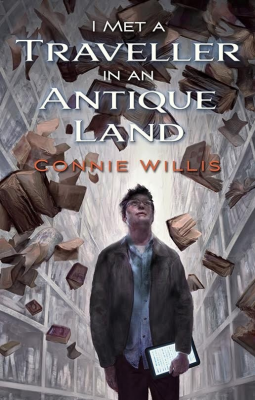 I Met a Traveller in an Antique Land, by Connie Willis (Subterranean Press).
I Met a Traveller in an Antique Land, by Connie Willis (Subterranean Press). This latest novella from SFWA Grand Master Connie Willis offers a new take on the “magical bookstore” story. Who among us hasn’t dreamed of wandering the aisles of the Library of Alexandria or discovering a manuscript of Shakespeare’s lost Cardenio? Or a store where we can find books so odd, so enchanting, that we can never return unchanged to our mundane lives? (Actually, one could argue that all bookstores and libraries do this.) One of my favorites is Carlos Ruiz Zafon’s The Shadow of the Wind, in which a boy is taken into a library and allowed to choose “his” book.
In her inimitable fashion, Willis draws us into a magical realm coexisting with the drab life of an author on a book tour in New York City. Tucked among the skyscraper office buildings, he stumbles upon a shop named, oddly, Ozymandias Books. Any student of high school English will recall the poem by Percy Bysshe Shelley:
My name is Ozymandias, King of Kings; Look on my Works, ye Mighty, and despair! Nothing beside remains. Round the decay Of that colossal Wreck, boundless and bare The lone and level sands stretch far away.
Slowly the author is drawn into the store and its mysterious workings, discovering on its shelves more and more obscure works (including the aforementioned play attributed to Shakespeare). Even more puzzling is the way the books are arranged, not by author or subject but by the disaster that destroyed the last remaining copy…except the one he holds in his hands. (Nothing beside remains…)
I Met a Traveller in an Antique Land is a delicious treat for readers and collectors, and a love song to those who treasure books.

Published on April 27, 2018 01:00
April 25, 2018
Today's Moment of Serenity
Published on April 25, 2018 01:00
April 23, 2018
Crossroads of Darkover Author Interview: Leslie Fish
 Coming in May, an all-new Darkover anthology featuring tales of decisions, turning points, love lost and found, all in the beloved world of the Bloody Sun. Stories by Jenna Rhodes, Pat MacEwen, Gabrielle Harbowy, Evey Brett, Rosemary and India Edghill, Diana L. Paxson, and more! Order yours today at: iBook, Kindle, Kobo, Nook. Table of Contents is here.
Coming in May, an all-new Darkover anthology featuring tales of decisions, turning points, love lost and found, all in the beloved world of the Bloody Sun. Stories by Jenna Rhodes, Pat MacEwen, Gabrielle Harbowy, Evey Brett, Rosemary and India Edghill, Diana L. Paxson, and more! Order yours today at: iBook, Kindle, Kobo, Nook. Table of Contents is here.Deborah J. Ross: Tell us about your introduction to Darkover.
Leslie Fish: I've been a Sci-Fi fan since I was a little kid. I started on comic books, and learned early to recognize the difference the characteristic drawing styles of Steve Ditko, Wally Wood, and Jack Davis. I visited our local corner drugs/convenience/comics store at least once a week, and noticed when they started including magazines and then paperback books. One day I picked up an Ace Double paperback with The Planet Savers on one side and The Sword of Aldones on the other -- and finished them both in a single week, and was forever hooked.
DJR: What about the world drew you in?
LF: The fascinating ecology and resulting society: at least 5 different intelligent species -- not counting the two immigration-waves of humans -- and how they interact, the politics of a psychic society, the endless mysteries of its history and future. Wow! Yes, you could spend a lifetime studying this intricate world.
DJR: What do you see as the future of Darkover? How has its readership changed over the decades? What book would you recommend for someone new to Darkover?
LF: I can see fans and authors exploring the details and mysteries of Darkover until...well, until we're out in the stars ourselves.
The Darkover audience was originally romantic/adventuresome teenagers; over the years it's grown to include not-just-young adults, and more thought-provoking tales than only romance and adventure; people are exploring more widely the details and remote corners of this whole fascinating world, it's widely assorted peoples, and its history -- and future. I'd recommend that a beginner begin where I began -- with The Sword of Aldones, in whatever incarnation it's reached now. I still think that's the core story of Darkover, and everything else branches out from there.
DJR: What inspired your story in Crossroads of Darkover?
LF: One of the mysteries of Darkover that's intrigued me for years is the connection between the Dry Towners and the culture of the planet Wolf (not to mention the presence of kyrri on Wolf!) as shown in The Door Through Space. We knew (from The Sword of Aldones) that trained and powerful psychics can "fetch" people through space, and from other tales that the chieri are the original psychic engineers of Darkover. I put them together in the individual characters of two young rebels, and this was the result.
DJR: How did you balance writing in someone else’s world and being true to your own creative imagination?
LF: Anything and everything can be grist for the artist's mill. I've imagined stories set in present-day America, historic England, and other future worlds. There's immense room for my own creative imagination to play in the Darkover universe!
DJR: Is there another Darkover story you would particularly like to write?
LF: There are several! I'd like to explore further the relationship between the other intelligent species of Darkover, and the assorted humans who live among them, not to mention the assorted mysteries of the world's past and future.
DJR: What have you written recently?
LF: Heheheheheh. A lot of new filksongs, currently seeking a collected album, short stories
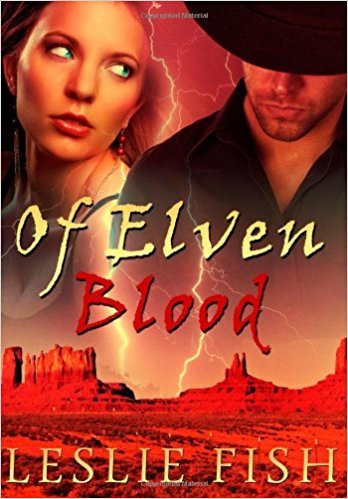 published in various hard-copy and online magazines, articles in my lively and slightly-outrageous blog, and my last-published book, Of Elven Blood.
published in various hard-copy and online magazines, articles in my lively and slightly-outrageous blog, and my last-published book, Of Elven Blood.DJR: What is your favorite of your published works and why?
LF: Right now, it's my Darkover novella -- and the song ("The Horsetamer's Daughter") that inspired it: "Tower of Horses," published in Music of Darkover. If you include my recorded works, then it would have to be my signature song: "Hope Eyrie".
DJR: What lies ahead for you?
LF: Ah, where to begin? I'm working on the remastered album, "Firestorm", writing a novel about psionics and AI, also co-authoring a novel with my husband Rasty that's meant to be the female comeback to 50 Shades of Grey, and co-authoring a novel with my old buddy Chris Madsen about the physics of metaphysics and adventures in the afterlife. It's anyone's guess which one will be finished first.
DJR: Anything else you’d like our readers to know about you, Darkover, or life in general?
LF: I've settled (permanently, thank you) in a farming town to the west of Phoenix, where I'm trying to raise an orchard of rare and endangered fruit-trees (have you ever seen a gold pomegranate?). I'm also raising a unique new breed of cats -- Silverdusts -- who have unusual intelligence and workable thumbs. Would anyone like a very smart cat?
On Darkover, the future is wide open and the possibilities are endless. For instance: all the humans on Darkover live on the single continent, but what about the rest of the planet? Why have they never explored the seas? There must be countless islands of less-than-continental size; what -- and who -- lives there? Another question: how did the Dry Towners get to Darkover, and how did kyrri get to Wolf? Looking back: what effect did the chieri have on the human society of historic Darkover? What's their relationship to the other intelligent species -- the Trailmen, the Catmen, and the mysterious dwellers in the seas? Looking ahead: how will Darkover's various peoples survive now that the Terran Empire has withdrawn from local space? See what I mean? Endless questions, and possibilities.
On life in general: the best advice I can give anyone -- Darkover fan or not, writer/artist or not -- is, never lose your imagination! Exercise your imagination, just for fun, about anything. Before you go to sleep at night, pick some topic to work your imagination on, and play with the idea until you fall asleep. You might find that you get new ideas in your dreams. More than just artistic inspirations have happened that way.
Leslie Fish learned to sing and to read at a very young age, playing guitar at sixteen, and writing the first of hundreds of songs shortly thereafter, including settings of Rudyard Kipling's poetry and the “all-time most notorious” Star Trek filksong ever written: “Banned From Argo.” She’s recorded a number of albums and composed songs, both alone and collaborative, on albums from every major filk label. She was elected to the Filk Hall Of Fame as one of the first inductees. In college, she majored in English and minoring in psychology, protest and politics, joined the Industrial Workers of the World, and did psychology counseling for veterans. Her other jobs included railroad yard clerk, go-go dancer, and social worker. She currently lives in Arizona with her husband Rasty and a variable number of cats which she breeds for intelligence.

Published on April 23, 2018 01:00
April 21, 2018
Detecting Fake Social Media, the Origin of the Dinosaurs, and Other Cool Science News
Algorithm to locate fake users on many social networks
Ben-Gurion University of the Negev (Beer-Sheva, Israel) and University of Washington (Seattle) researchers have developed a new generic method to detect fake accounts on most types of social networks, including Facebook and Twitter. According to a new study in Social Network Analysis and Mining, the new method is based on the assumption that fake accounts tend to establish improbable links to other users in the networks.The algorithm consists of two main iterations based on machine-learning algorithms. The first constructs a link prediction classifier that can estimate, with high accuracy, the probability of a link existing between two users. The second iteration generates a new set of meta-features based on the features created by the link prediction classifier. Lastly, the researchers used these meta-features and constructed a generic classifier that can detect fake profiles in a variety of online social networks.
Dinosaurs ended -- and originated -- with a bang!
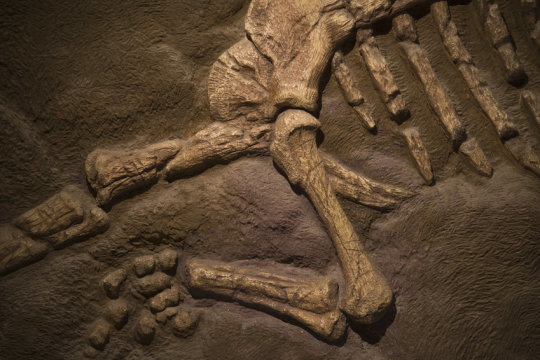
Lead author Dr Massimo Bernardi, Curator at MUSE and Research associate at Bristol's School of Earth Sciences, said: "We were excited to see that the footprints and skeletons told the same story. We had been studying the footprints in the Dolomites for some time, and it's amazing how clear cut the change from 'no dinosaurs' to 'all dinosaurs' was."
The point of explosion of dinosaurs matches the end of the Carnian Pluvial Episode, a time when climates shuttled from dry to humid and back to dry again. There were massive eruptions in western Canada, represented today by the great Wrangellia basalts -- these drove bursts of global warming, acid rain, and killing on land and in the oceans.
Seasons of Snow Cover in the West

Astronauts aboard the International Space Station captured this photo while flying over the western United States. The wide field of view stretches from the Sierra Nevada of California to the Columbia Plateau of Oregon and the Snake River Valley of Idaho.
Antibiotic-resistant bacteria discovered in NYC house mice

A study by scientists at the Center for Infection and Immunity (CII) at Columbia University's Mailman School of Public Health finds New York City house mice carry bacteria responsible for mild to life-threatening gastroenteritis in people, and some of these bacteria may be resistant to antibiotics. Findings appear in the journal mBio.
Can a simple blood test rule out lung cancer?
A blood test to measure the levels of two proteins in plasma that are common predictors of lung cancer was 98 percent effective in a multicenter clinical trial at distinguishing benign from malignant lung nodules when combined with a patient's clinical characteristics to form an integrated classifier.
Grocery Stores Get Mostly Mediocre Scores On Their Food Waste Efforts
The Environmental Protection Agency came up with a food recovery hierarchy based on environmental impact ... Since preventing waste has the greatest environmental impact, we wanted to weight strategies that work on reducing food waste even before it gets to a plate or a shelf.
So that's all the purchasing, delivering, transport — all the steps before food is sold at the store. Whether it's buying ugly produce, committing to purchasing whole crops, or working with delivery companies to find a place where a rejected order could go instead instead of being tossed in a landfill.
Using AI to detect heart disease
Predicting and monitoring cardiovascular disPredicting and monitoring cardiovascular disease is often expensive and tenuous, involving high-tech equipment and intrusive procedures. However, a new method developed by researchers at USC Viterbi School of Engineering offers a better way. By coupling a machine learning model with a patient's pulse data, they are able to measure a key risk factor for cardiovascular diseases and arterial stiffness, using just a smart phone.
Arterial stiffening, in which arteries become less elastic and more rigid, can result in increased blood and pulse pressure. In addition to being a known risk factor for cardiovascular diseases, it is also associated with diseases like diabetes and renal failure.
Ben-Gurion University of the Negev (Beer-Sheva, Israel) and University of Washington (Seattle) researchers have developed a new generic method to detect fake accounts on most types of social networks, including Facebook and Twitter. According to a new study in Social Network Analysis and Mining, the new method is based on the assumption that fake accounts tend to establish improbable links to other users in the networks.The algorithm consists of two main iterations based on machine-learning algorithms. The first constructs a link prediction classifier that can estimate, with high accuracy, the probability of a link existing between two users. The second iteration generates a new set of meta-features based on the features created by the link prediction classifier. Lastly, the researchers used these meta-features and constructed a generic classifier that can detect fake profiles in a variety of online social networks.
Dinosaurs ended -- and originated -- with a bang!

Lead author Dr Massimo Bernardi, Curator at MUSE and Research associate at Bristol's School of Earth Sciences, said: "We were excited to see that the footprints and skeletons told the same story. We had been studying the footprints in the Dolomites for some time, and it's amazing how clear cut the change from 'no dinosaurs' to 'all dinosaurs' was."
The point of explosion of dinosaurs matches the end of the Carnian Pluvial Episode, a time when climates shuttled from dry to humid and back to dry again. There were massive eruptions in western Canada, represented today by the great Wrangellia basalts -- these drove bursts of global warming, acid rain, and killing on land and in the oceans.
Seasons of Snow Cover in the West

Astronauts aboard the International Space Station captured this photo while flying over the western United States. The wide field of view stretches from the Sierra Nevada of California to the Columbia Plateau of Oregon and the Snake River Valley of Idaho.
Antibiotic-resistant bacteria discovered in NYC house mice

A study by scientists at the Center for Infection and Immunity (CII) at Columbia University's Mailman School of Public Health finds New York City house mice carry bacteria responsible for mild to life-threatening gastroenteritis in people, and some of these bacteria may be resistant to antibiotics. Findings appear in the journal mBio.
Can a simple blood test rule out lung cancer?
A blood test to measure the levels of two proteins in plasma that are common predictors of lung cancer was 98 percent effective in a multicenter clinical trial at distinguishing benign from malignant lung nodules when combined with a patient's clinical characteristics to form an integrated classifier.
Grocery Stores Get Mostly Mediocre Scores On Their Food Waste Efforts

The Environmental Protection Agency came up with a food recovery hierarchy based on environmental impact ... Since preventing waste has the greatest environmental impact, we wanted to weight strategies that work on reducing food waste even before it gets to a plate or a shelf.
So that's all the purchasing, delivering, transport — all the steps before food is sold at the store. Whether it's buying ugly produce, committing to purchasing whole crops, or working with delivery companies to find a place where a rejected order could go instead instead of being tossed in a landfill.
Using AI to detect heart disease
Predicting and monitoring cardiovascular disPredicting and monitoring cardiovascular disease is often expensive and tenuous, involving high-tech equipment and intrusive procedures. However, a new method developed by researchers at USC Viterbi School of Engineering offers a better way. By coupling a machine learning model with a patient's pulse data, they are able to measure a key risk factor for cardiovascular diseases and arterial stiffness, using just a smart phone.
Arterial stiffening, in which arteries become less elastic and more rigid, can result in increased blood and pulse pressure. In addition to being a known risk factor for cardiovascular diseases, it is also associated with diseases like diabetes and renal failure.

Published on April 21, 2018 01:00
April 20, 2018
Short Book Reviews: Two Delights from Kevin Hearne
In which I review two quite different pieces by versatile author Kevin Hearne
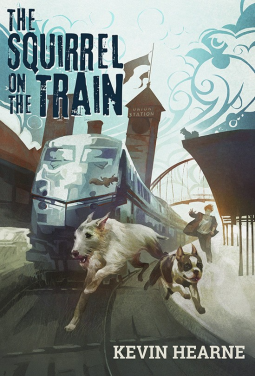 The Squirrel on the Train, by Kevin Hearne (Subterranean Press)
The Squirrel on the Train, by Kevin Hearne (Subterranean Press)My introduction to Kevin Hearne’s work was Iron Druid, so I was delighted to discover that the dogs belonging to Druid Atticus O’Sullivan, or perhaps the other way around, he belonging to them, have their own adventures. This one begins with a train trip to Portland, during which the dogs are terribly upset because there is a squirrel (die, evil squirrel!) on top of the train. Atticus explains that the wind shear will cause the squirrel to jump off and when they arrive, squirrel in place, of course the dogs conclude that all natural order, including the laws of physics, will now be overturned. Their fears are confirmed when an Atticus look-alike is murdered, and so the chase is afoot. A-four paws, that is.
This utterly charming novella showcases Hearne’s skill at whimsical humor and his versatility as an author.
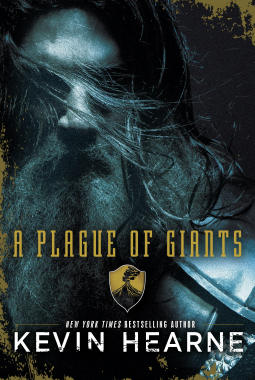 A Plague of Giants, by Kevin Hearne (Del Rey, 2017).
A Plague of Giants, by Kevin Hearne (Del Rey, 2017).At some time in the past of this fantasy world, the balance of trade and power has been overturned through not one but two invasions of oversized warriors; one race being known to the others, quasi-Viking fire-wielders driven from their lands by a volcanic eruption. The second, strangers from over the sea, are mysterious and even more lethal. How these upheavals came about and were responded to is related in the present time through a bardic storyteller who assumes the likeness of various participants along the time line. In the present, we know that the giants have been defeated at a terrible cost, yet wounds remain unhealed and intrigues abound, threatening chaos.
This is a long, slowly-paced book that incorporates the stories of a large cast of characters from different cultures, much of it channeled through the central storyteller, with past and present timelines looping back on themselves. The world-building is amazing in itself, rich and complex, with each culture possessing its own form of magical gift (“kenning”) acquired through near-lethal trials. The individual stories are marvelous, the characters clearly distinct. My favorite is Abhinava Khose, born into a clan of plains hunters and unable to tell his family that not only does he never want to kill animals, but he is gay. He’s sensitive, compassionate, a natural leader, and unexpectedly courageous. The inner conflicts reflect and intensify the outer drama in his tale.
Read at a leisurely pace to savor the adventures of each person, the book is a delight. It’s not a tale to skim for “what happens next.” The ending is already established. However, that slowness, when combined with the length and complexity of the timelines, means it’s easy to get lost in the story of the moment and forget the multitude of details that have come before, to keep track of the cast of thousands and the sheer number of place names, group names, and so forth. In the ebook version I read, there are no maps or helpful lists, but there are series of charming portraits of important characters. Add to this the revelation that A Plague of Giants is only the first in a series means either loving the world so much you never want to leave it, or not experiencing the satisfaction of a complete story arc.
Kevin Hearne is an immensely capable author. A Plague of Giants and its subsequent volumes represents a highly ambitious project that I have no doubt he will carry on in a brilliant fashion. Besides the difficulties presented by the length and complexity of the book, I would have liked to spend more consecutive time with my favorite characters, each of whom surely deserves an entire book of his or her own.

Published on April 20, 2018 01:00





